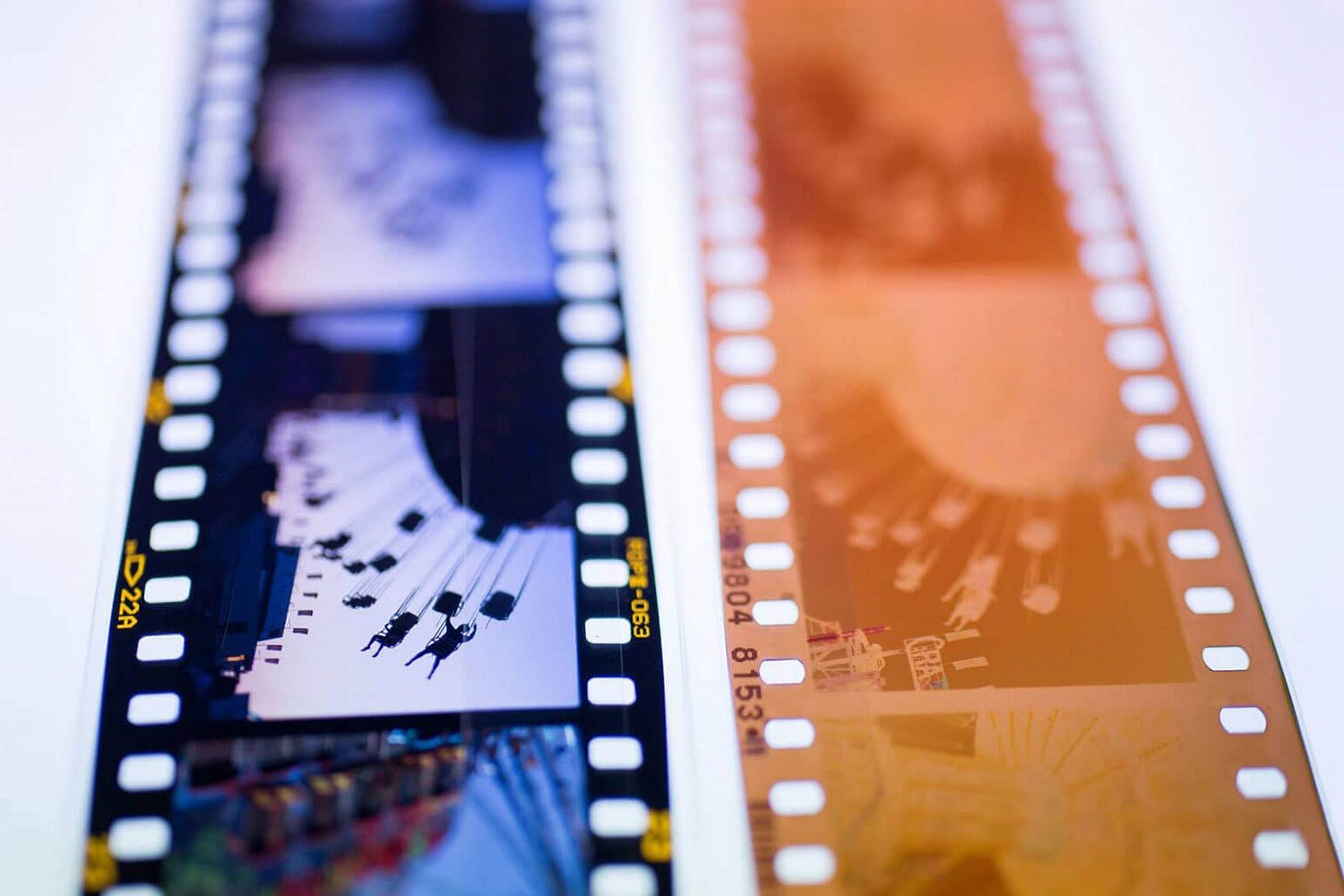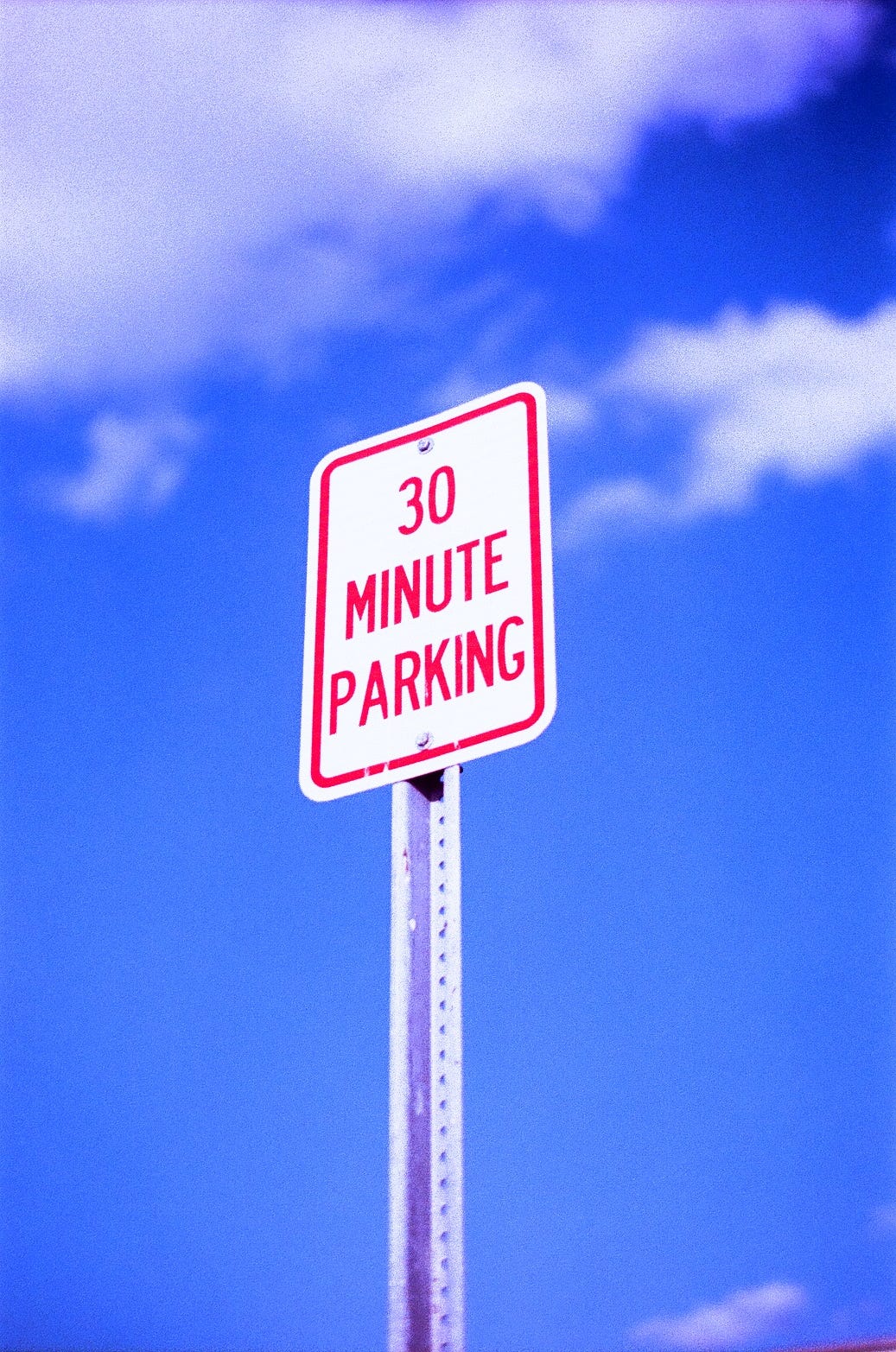Cross Processing
For those who enjoy doing things wrong on purpose…
My journey with film photography started when I was a little kid in the late 80’s, being handed some crappy 110 film camera, eventually upgrading to a real SLR when I was a teenager. This early love of photography found me taking a job at the local Walgreens where I worked as a technician in the one hour photo lab. It was here that I learned all about how to develop color film using their machinery along with all the Do’s and Don'ts according to Walgreens corporate policy.
One of those rules was that we could only develop color film that was of the process type called “C-41”, the industry standard. There’s a couple reasons for this, the most obvious one is that you don’t want to process black and white film in color chemistry since we were told this will ruin the roll. Same goes for color slide film, a film that gives you color positives, which was the “E-6” processing type.
The average person didn’t need to know what processing was used for their photos, but as a tech I had to pay attention because there are fundamental differences in each type of film. FYI, here’s what slide film looks like after processing, vs a regular color negative:
Being a tech at the time, we were driven by making sure things were done correctly - accuracy mattered a ton, because there were no second chances if you made a mistake and ruined someone’s film. And thus, E-6 and C-41 were never ever ever allowed to be mixed!
Here’s the thing though: If you do send a roll of E-6 slide film through the C-41 chemicals, this is referred to as “cross processing” and it doesn’t necessarily ruin the film, but it does make the photos come out really different and interesting - depending on your point of view. The color positive film also converts somehow into a color negative. How’s that work? No clue. Magic?
. . .
I still remember the first time I heard about cross processing as a technique, though I’d certainly seen it in action before. Back in the days of LiveJournal, I had a friend named Nicole who was also a hobbyist photographer and we’d often trade comments and tips on each other’s photos. One day she asked me if I’d ever tried cross processing and quite naturally I had no clue what she was talking about. After a quick search I realized this was something I’d seen before in skateboarding magazines - the punchy colors were a real trend back in the 90’s, thanks to photographers like Sturt and Atiba.
I’m pretty sure this technique was also used for band photos in the 90’s but I can’t think of a specific example right now.
Either way, I was excited to give it a try but there were some unknowns surrounding the process that I was keen to resolve. First off, would I actually kill the film developing machinery at my job like they told us? Would it ruin the chemistry, thereby costing the lab a bunch of time & money to drain, clean and replace the chemicals? Lastly, could I really get those cool results on my own photos?
Being a model employee (and maybe by this point I was the lead photo tech, can’t remember), I decided to run an experiment using Walgreens company property. We had a maintenance day coming up and I knew I could run a roll of E-6 film through just beforehand with a 2nd test roll of regular C-41 immediately after, and if things went badly then nobody would ever have to know since I’d be draining the chemicals anyway. Luckily for me this little test went well – no chemicals were ruined, the pics came out fine and maintenance proceeded on schedule.
These pics are from my first few attempts at cross processing film:
After posting some of these pics online I had different friends hit me up to be their own personal hookup for cross processing, as they weren’t able to find another lab technician who was cool, smart and handsome enough to break company policy for them.
Anyway, I only ended up shooting about 4 rolls of cross processed slide film during my time at Walgreens. It’s a real shame that I didn’t take advantage of the opportunity while it still existed, as obviously Walgreens no longer have any in-store labs that process film (and of course I no longer work there).
With the cost of film only ever increasing - not to mention the fact that slide film is more expensive in the first place - it’s a pricey sort of experiment these days, but I still manage to shoot a roll every now and again. I find that it adds a different sort of anticipation to regular film, as you’re waiting both to see how your shots came out but you also have the surprise of seeing how the colors and contrast affect the images as well.
Would definitely recommend trying it out if you ever get the chance. Sometimes it’s more interesting to do things the wrong way!









